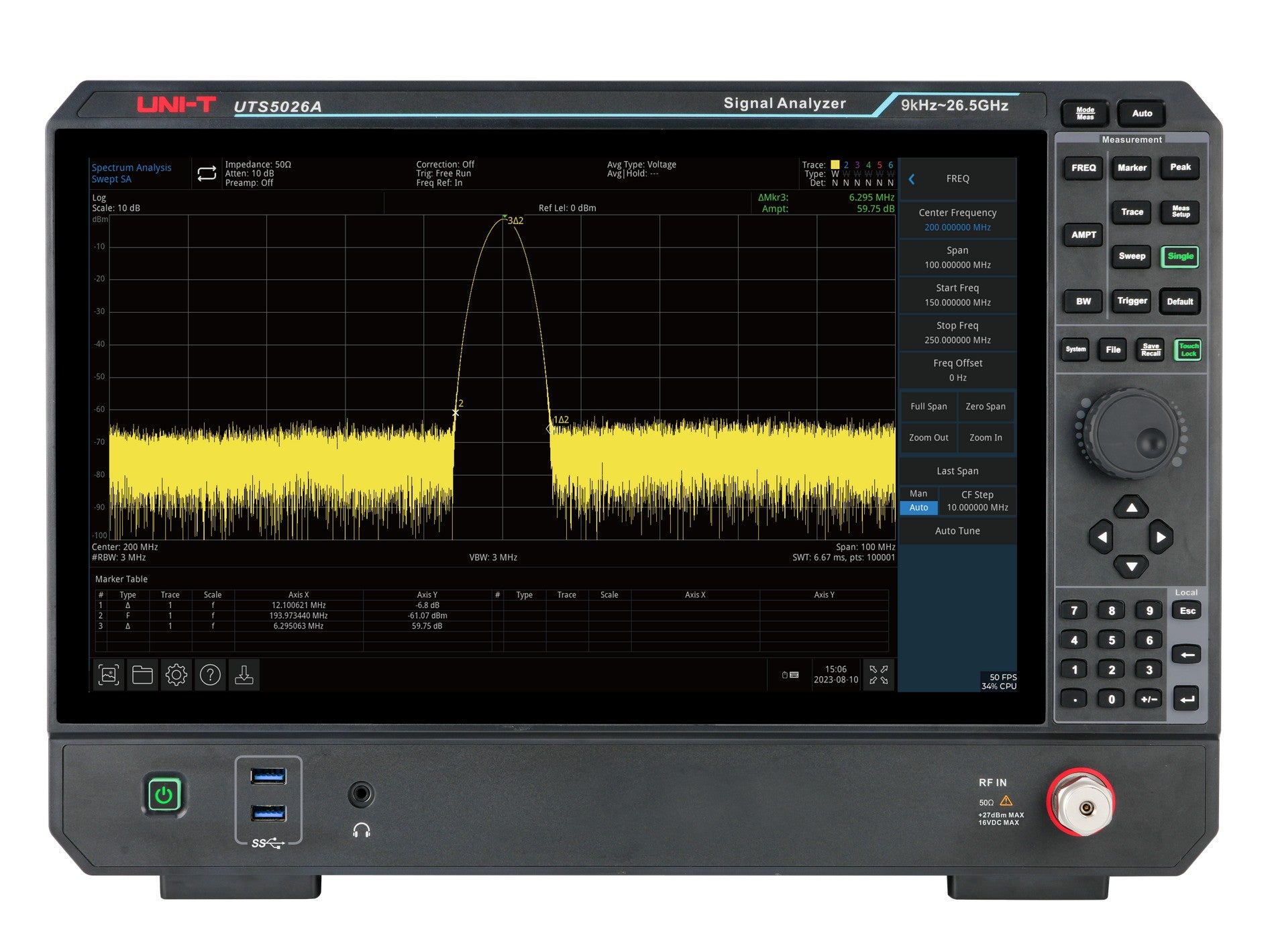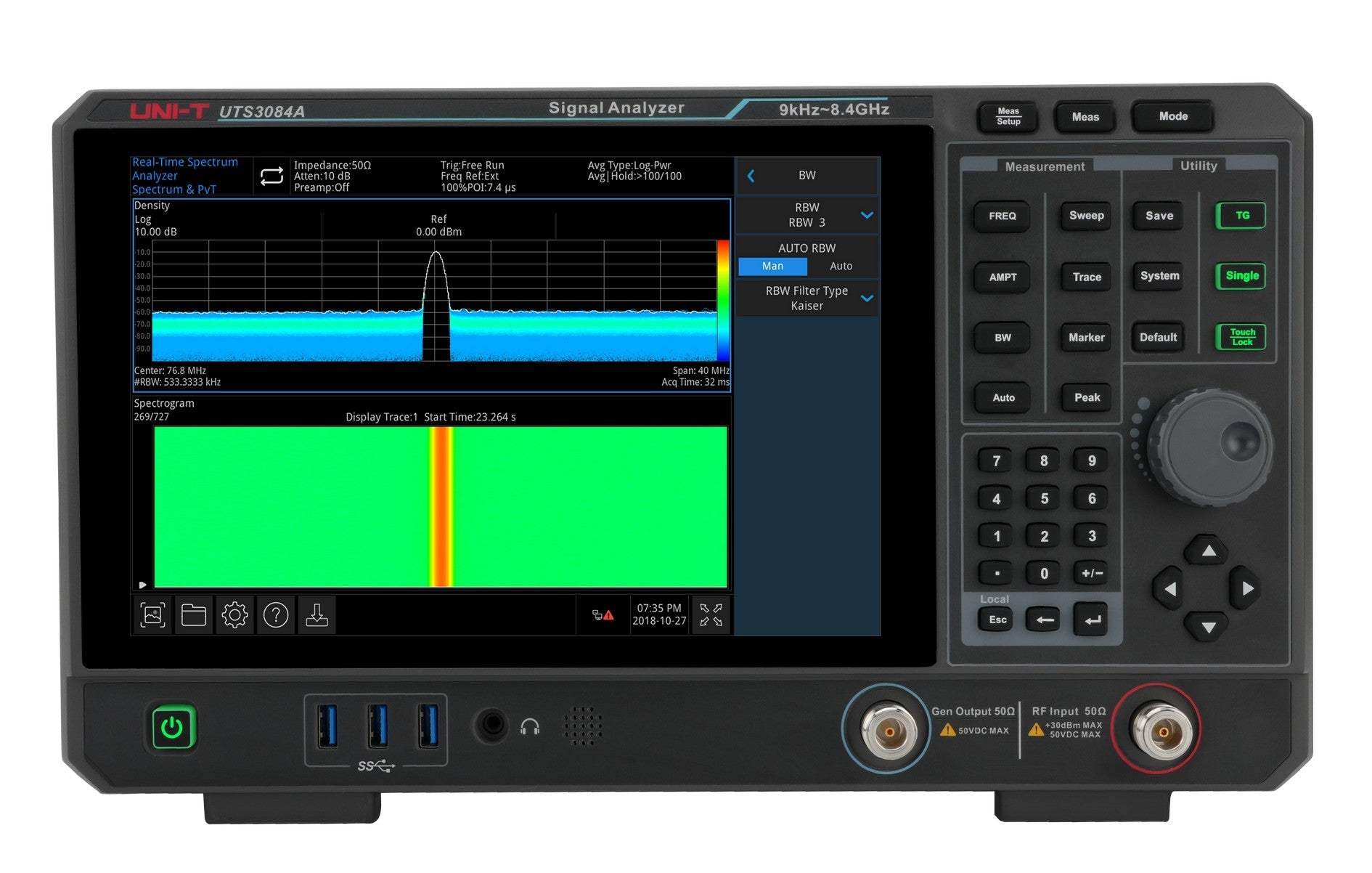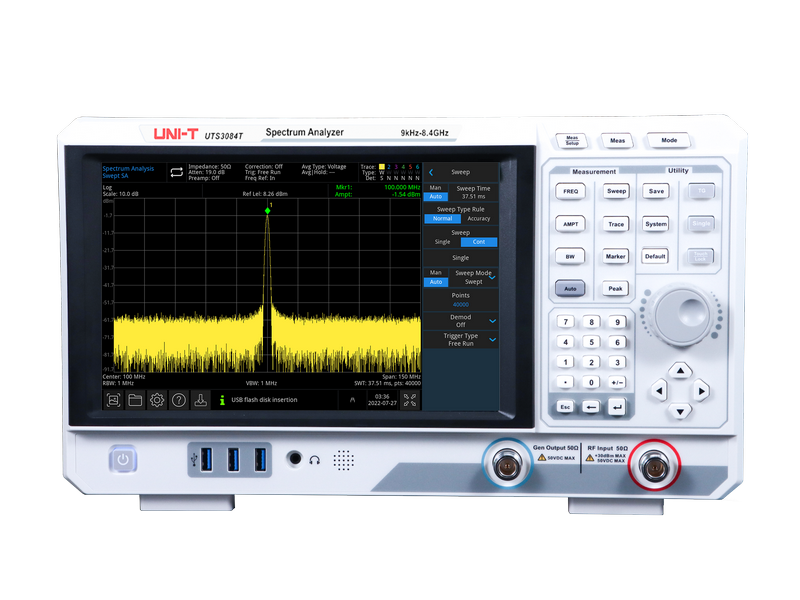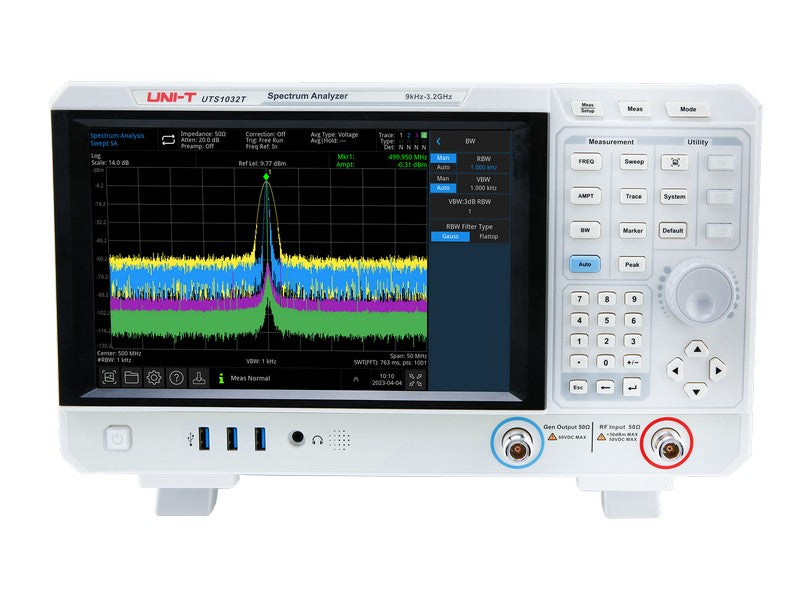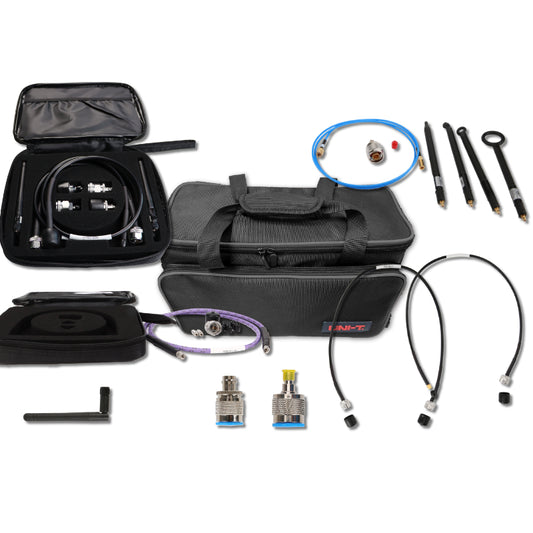Spectrum/Signal Analyzers
Now's The Time To Save
Save $1,000's on UNI-T Oscilloscopes. Bundles and Discounts until 12/31/25 on MSO2000X, MSO3000X, and MSO7000X. Learn more about the bundles here .
Check out our CLEARANCE Section for unbelievable savings.
Save $1,000's on UNI-T Oscilloscopes. Bundles and Discounts until 12/31/25 on MSO2000X, MSO3000X, and MSO7000X. Learn more about the bundles here .
Check out our CLEARANCE Section for unbelievable savings.
The UNI-T UTS3000A and UTS5000A series instruments are Signal Analyzers. They do everything our standard UTS1000B/T and UTS3000B/T Spectrum Analyzers do, while offering enhanced specifications and more options. Signal Analyzers can be expanded to offer EMI, Analog Demod, 40MHz RTSA, Digital I/Q, VSA/VNA (S11 and S21), and LTE analysis.
Series
Frequency Range
RBW
Phase Noise
DANL
Tracking Generator
Display

